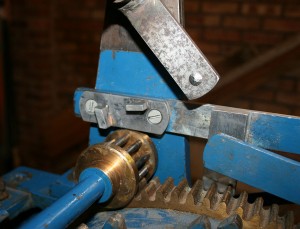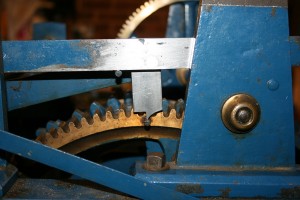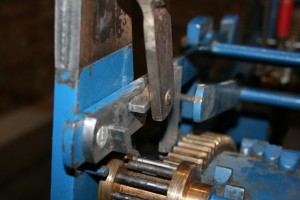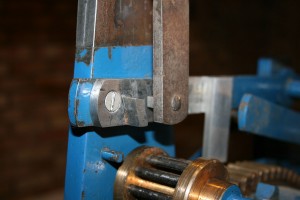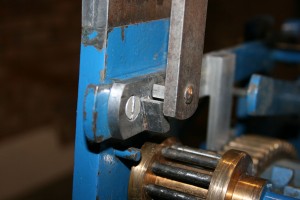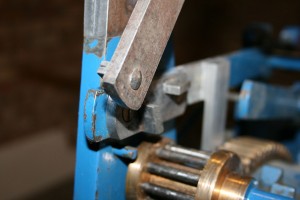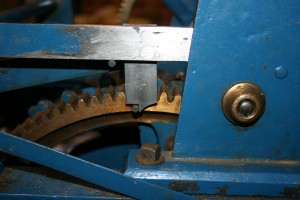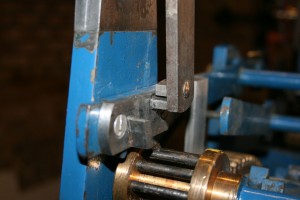The control mechanism for the chiming train is now complete (all but for pinning the rotating arm to the fly arbour). Read the previous two posts on this mechanism for background.
I’ll repeat the explanation (improved and modified slightly) from the earlier post of how the process works, with pictures of the finished product.
Starting position before chiming
The horizontal arm is held just above the rest pin. It is held there by the downward projection from the arm which has been lifted onto one of the four pins around the large wheel attached to the barrel.
The rotating arm on the fly arbour is always trying to rotate clockwise but is obstructed because the square block projecting from it is locked against the square block projecting from the catch plate. Note the horizontal arm is above the rest pin.
Chiming process
The horizontal arm is lifted (note the increased gap between the rest pin and the arm) briefly by the going train, on each quarter hour. This unlocks the rotating arm, attached to the fly arbour so its projecting block can pass below the block on the catch plate.
The projecting block of the rotating arm now briefly locks against the upright (angled) block on the catch plate, awaiting its final release.
The lifting mechanism from the going train disengages, causing the horizontal arm to drop back to it’s starting position (still above the rest pin). This unlocks the rotating arm again and allows the projecting block on the arm to pass over the upright block.
The fly arbour begins to rotate, which means the rest of the striking train moves too.
About half way through the first rotation of the fly arbour the large wheel on the barrel has rotated far enough that the downward projection from the horizontal arm drops off the pin.
The horizontal arm drops down, below it’s starting point, and finally rests on the rest pin. This allows the rotating arm to rotate freely, it’s projecting block passing over the horizontal block on the catch plate.
When the chime barrel reaches the end of the tune, the next pin on the wheel reaches the point where it raises the horizontal arm.
The block on the rotating arm now collides with the horizontal block on the catch plate causing the arbour, and rest of the train, to stop abruptly (except the fly, which is able to come to rest gradually thanks to its ratchet drive).
